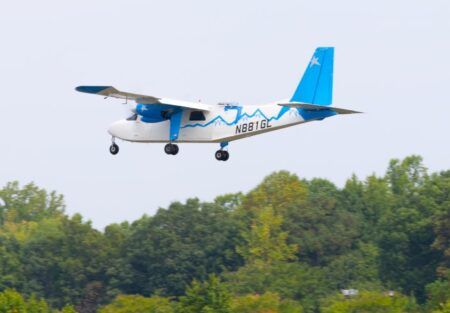The A321LR takes off from Airbus’ Hamburg Plant
Airbus’s first A321LR test aircraft, MSN7877, has accomplished its maiden flight from the company’s plant in Hamburg, Germany.
The aircraft, which flew for 2 hours and 36 minutes from Hamburg, will undergo a 100-hour flight test program which will include transatlantic missions. EASA and FAA Type Certification for the A321LR (Long Range) is expected between April and June and it is expected to enter into service before the end of this year.
The aircraft is powered by LEAP-1A engines produced by CFM International. It has an increased maximum take-off weight of 97 tonnes and a third additional center fuel tank, extends the aircraft’s range to 4,000 nautical miles (7,400km).
The A321LR also features a new door configuration, enabling its operators to accommodate up to 240 passengers in Airbus’s widest single-aisle fuselage in the sky.
During the flight, the crew tested the aircraft’s flight controls, engines and main systems including flight envelope protections, both at high and low speed.
The aircraft’s crew comprised experimental test pilots Yann Beaufils and Peter Lofts, as well as flight test engineers Frank Hohmeister, Jim Fawcett and Cedric Favrichon and cabin specialist Alexander Gentzsch.
A320 program head Klaus Roewe stated, “Thanks to its outstanding performance and unbeatable efficiency, the A321LR will allow our customers to perform flights of up to 4,000 nautical miles, allowing them to open new routes – for example transatlantic – and conquer new markets.”
Airbus A321neo offers a reduction in operating costs of up to 25% compared to the Boeing 757-200. More than 1900 orders have been received for the aircraft from over 50 customers.
See a video of the maiden flight here.
A321LR Fast facts:
Up to 240 passengers capacity;
20% less fuel consumption per seat compared to previous generation aircraft;
Widest single aisle cabin;
Range of up to 4,000 nautical miles (7,400km);
Maximum take-off weight of 97 tonnes; Two Leap-1A engines providing up to 70,000 lb of thrust combined. 2 February 2018




